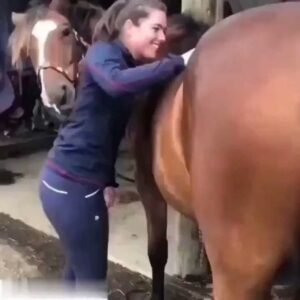The infant at the center of one of psychology’s most contentious experiments—now referred to as “medical misogyny”—was little Albert. The baby, who passed away just six years after the study that made him fear everything hairy, was unknown for decades.
Ivan Pavlov, a Russian neurologist, found in the 1890s that dogs exhibited conditioned learning, also known as conditioned reflex, when they responded to the ring of a bell by drooling as they associated the sound wi
th food.
News & Current EventsThe Heartbreaking Fate Of ‘Little Albert’: Child Subject Of Historic Study Died At Just Six
The infant at the center of one of psychology’s most contentious experiments—now referred to as “medical misogyny”—was little Albert. The baby, who passed away just six years after the study that made him fear everything hairy, was unknown for decades.
Ivan Pavlov, a Russian neurologist, found in the 1890s that dogs exhibited conditioned learning, also known as conditioned reflex, when they responded to the ring of a bell by drooling as they associated the sound with food.
Ezoic
The Nobel Prize winner’s discovery was so groundbreaking that it influenced the development of behaviorism, a theory that suggests “all behaviors are acquired through conditioning processes,” Verywell Mind explains.
In simple terms, “It all comes down to the patterns of learning we’ve acquired through associations, rewards, and punishments. This approach argues that it’s our environment that shapes our actions more than our thoughts and feelings.”
Source: Wikipedia
Baby experiment
John B. Watson, who is considered the creator of behaviorism, was influenced by Pavlov’s work and made the decision to test conditioned reflexes, or fear reactions, on a 9-month-old human infant in 1920.
“He was healthy from birth and one of the best developed youngsters ever brought to the hospital, weighing twenty-one pounds at nine months of age,” Watson and his study partner, Rosalie Rayner, wrote of Little Albert, whose mother was a wet nurse. “He was on the whole stolid and unemotional. His stability was one of the principal reasons for using him as a subject in this test. We felt that we could do him relatively little harm by carrying out such experiments.”
Feared Santa
The two were preparing for a science-disguised horror performance.
Ezoic
Initially, Albert responded to soft animals like the white rat and a rabbit with playful interest.
“At no time did this infant ever show fear in any situation,” writes Watson, who was 80 when he died in 1958. “No one had ever seen him in a state of fear and rage. The infant practically never cried.”
Ezoic
The twist was that every time Albert reached for the rat, the room was filled with the sound of a hammer crashing on a steel pipe. The infant recoiled, wailed, and flinched.
After a few trials, the child’s lighthearted response turned into sheer terror, and he or she retreated from anything that looked like the furry animals, including Santa Claus’ fluffy white beard, a dog, a rabbit, or a wool coat.
This was an example of Pavlovian conditioning, but the doctors had a scared newborn instead of drooling dogs.
“Watson presented [the Albert study] as a proof for his theory that all our emotional responses in adulthood are offshoots of three primordial responses – fear, rage and love,” said Dr. Alan Fridlund, a social and clinical psychologist at UC Santa Barbara.





